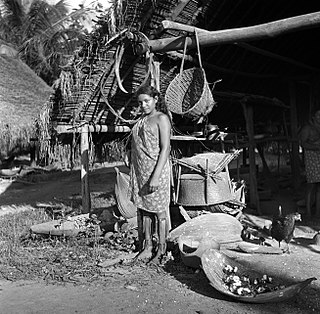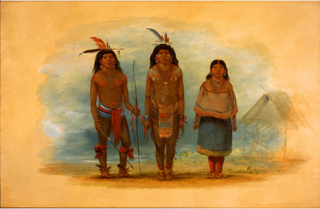This is a list of rivers in Suriname, located in the Guiana Shield of northern South America.
Contents


This is a list of rivers in Suriname, located in the Guiana Shield of northern South America.


This list is arranged by drainage basin, with respective tributaries indented under each larger stream's name.

The Guianas, sometimes called by the Spanish loan-word Guayanas, is a region in north-eastern South America which includes the following three territories:

The Courantyne/Corentyne/Corantijn River is a river in northern South America in Suriname and Guyana. It is the longest river in the country and creates the border between Suriname and the East Berbice-Corentyne region of Guyana.

Nieuw Nickerie is the third largest city in Suriname with a population estimated at 12,818. It is the capital city of the Nickerie district, and the terminus of the East-West Link.
Washabo is a town in Suriname, located in the Kabalebo resort of Sipaliwini district. The town lies on a bend in the Corantijn river (Courantyne), on the border with Guyana. Washabo is an indigenous village of the Lokono tribe near Apoera. It has a population of about 600 people. According to the oral tradition, the village was founded in the 1920s by the Lingaard family.

Corneliskondre is a village in Suriname, located in the Boven Coppename resort of Sipaliwini District. It has a population of 70 as of 2020, and is inhabited by indigenous people of the Kalina tribe.

Kuntur Wasi is the name given to the ruins of a religious center with complex architecture and stone sculptures, located in the Andean highlands of Peru. It is believed the inhabitants had a link with the Chavín culture.
The blackstripe corydoras or Bond's catfish is a tropical freshwater fish belonging to the Corydoradinae sub-family of the family Callichthyidae. It originates in inland waters in South America, and is found in the Yuruarí River in Venezuela and the Corantijn and Rupununi River basins in Guyana and Suriname. In the system of "C-Numbers" developed by the German fishkeeping magazine DATZ to identify undescribed species of Corydoras in the aquarium hobby, this fish had been assigned number "C31" until it was correctly identified.
Amatopo Airstrip is an airstrip located near Amatopo in Suriname.
Cteniloricaria maculata is a species of armored catfish native to French Guiana and Suriname where it is found in the Maroni and Corantijn River basins. C. maculata lives in creeks and rapids where the vegetation is poor, the water is clear and well-oxygenated and shallow, with sandy to rocky substrate. This species grows to a length of 17 centimetres (6.7 in) SL.
Metaloricaria nijsseni is a species of armored catfish endemic to Suriname where it occurs in the Suriname, Saramacca, Nickerie and Corantijn River basins. This species grows to a length of 29.5 centimetres (11.6 in) SL.

Kabalebo River is a river in Suriname. It joins with the Courantyne River near Apoera. A plan for a dam in the river serving a hydroelectric power plant is part of the West Suriname Plan of the 1960s. As of 2020, no construction has taken place. Petrogylphs had been discovered on a rock by Ten Kate in 1886.
Wayambo may refer to:
Werehpai is an archaeological site in Suriname consisting of several caves containing petroglyphs of pre-Columbian origin. The site is located about 10 kilometres (6.2 mi) from the village of Kwamalasamutu. With 313 identified petroglyphs, Werehpai is by far the largest pre-Columbian petroglyph site known in Suriname, and perhaps the largest in all of the Guianas.

The Wonotobo Falls are a series of waterfalls in the Courantyne River in Sipaliwini District, Suriname near the border with Guyana. The waterfalls are not navigable. A pre-Columbian petroglyph site is located near the falls.
Crenicichla lugubris is a species of cichlid native to South America. It is found in the Amazon River basin, in the Branco, Negro and Uatumã rivers in Brazil; the Essequibo River and Branco River in Guyana; the Corantijn River in Suriname. This species reaches a length of 32.9 cm (13.0 in).
Crenicichla nickeriensis is a species of cichlid native to South America. It is found in the Nickerie and Corantijn River basins in Suriname. This species reaches a length of 19.1 cm (7.5 in).

Crenicichla sipaliwini is a species of cichlid native to South America. It is found in the Sipaliwini River, in its upper Corantijn drainage in Suriname. This species reaches a length of 17.3 cm (6.8 in).

The Taruma are an indigenous people found in the northern Brazil, southern Guyana, and southern Suriname. They used to speak Taruma which is considered critically endangered. The Taruma in Suriname have merged with the Tiriyó, in Brazil they merged with the Wai-wai. The Wapishana village of Maruranau in Guyana still recognises the tribe.
HNLMS Wamandai (A870) was a tugboat of the Royal Netherlands Navy (RNN). She was built in the Netherlands and served between 1962 and 1985 in the RNN.